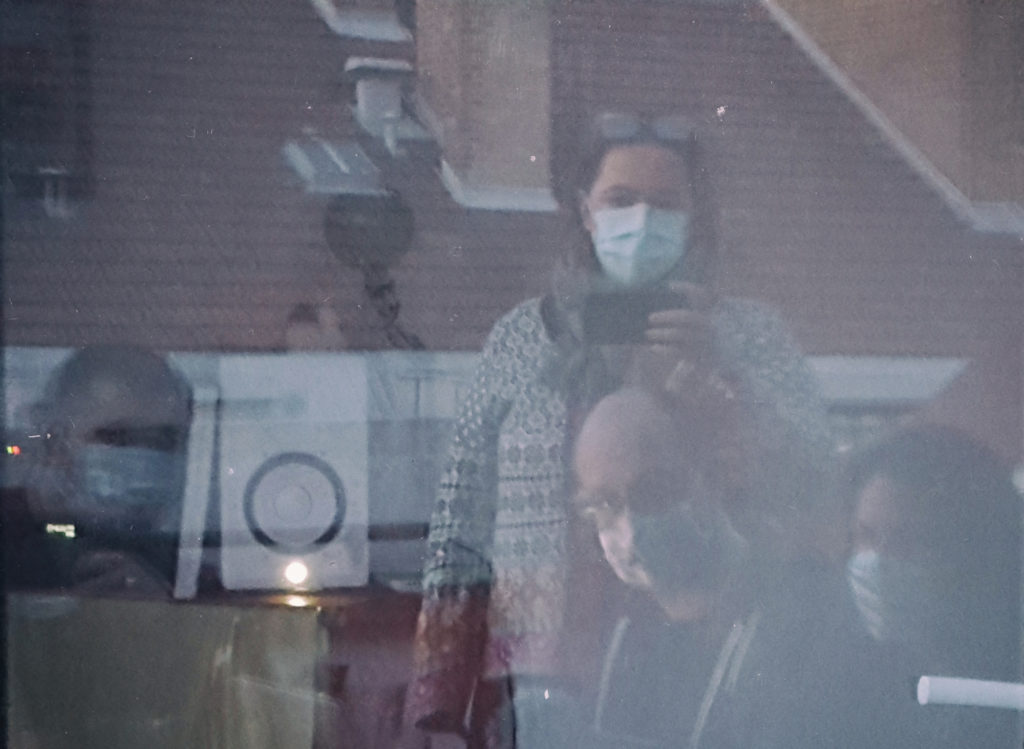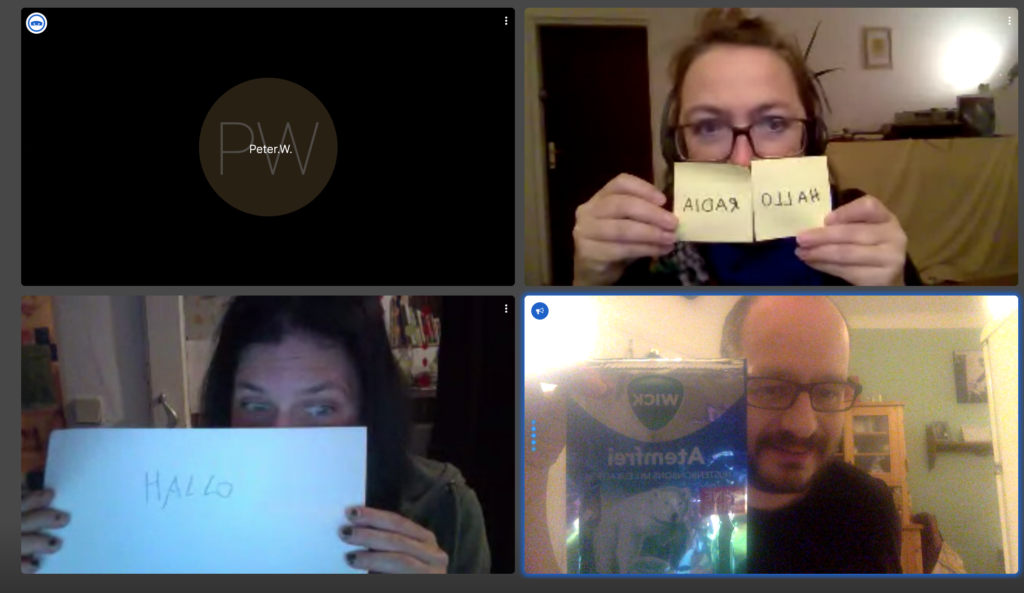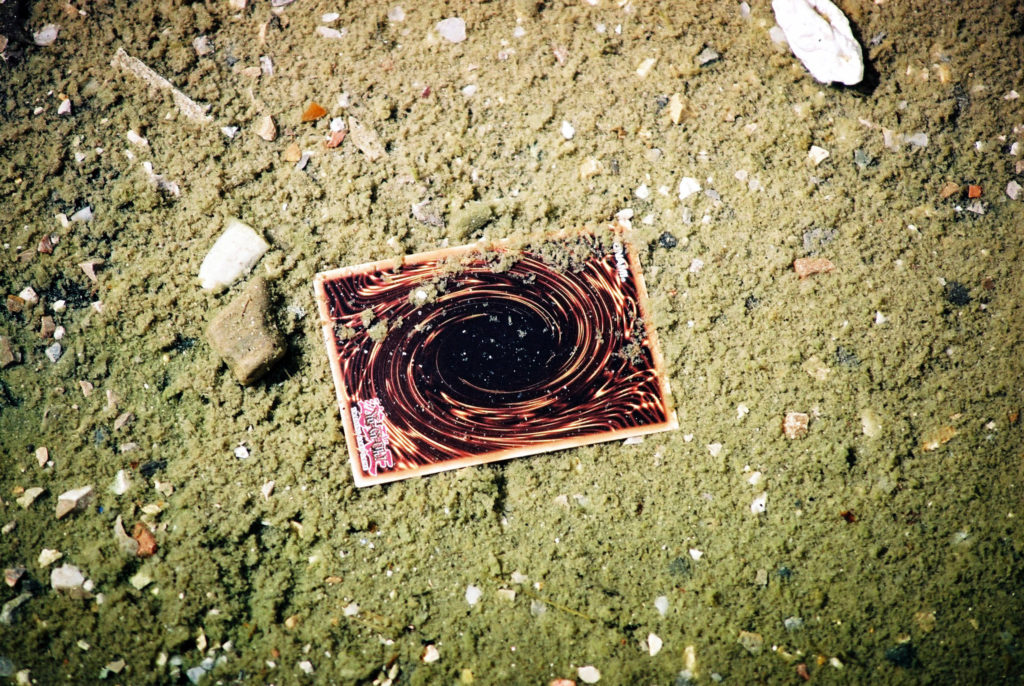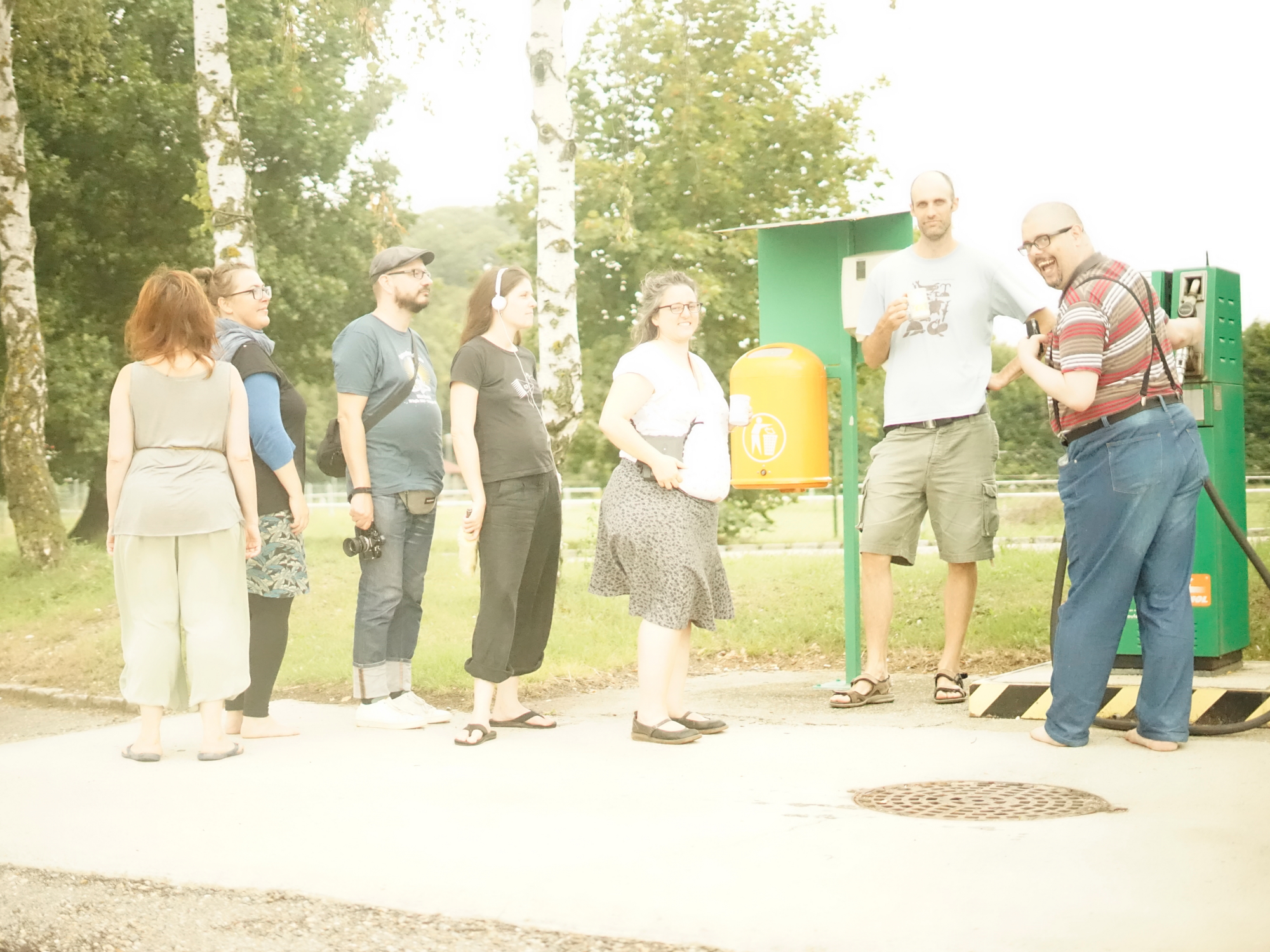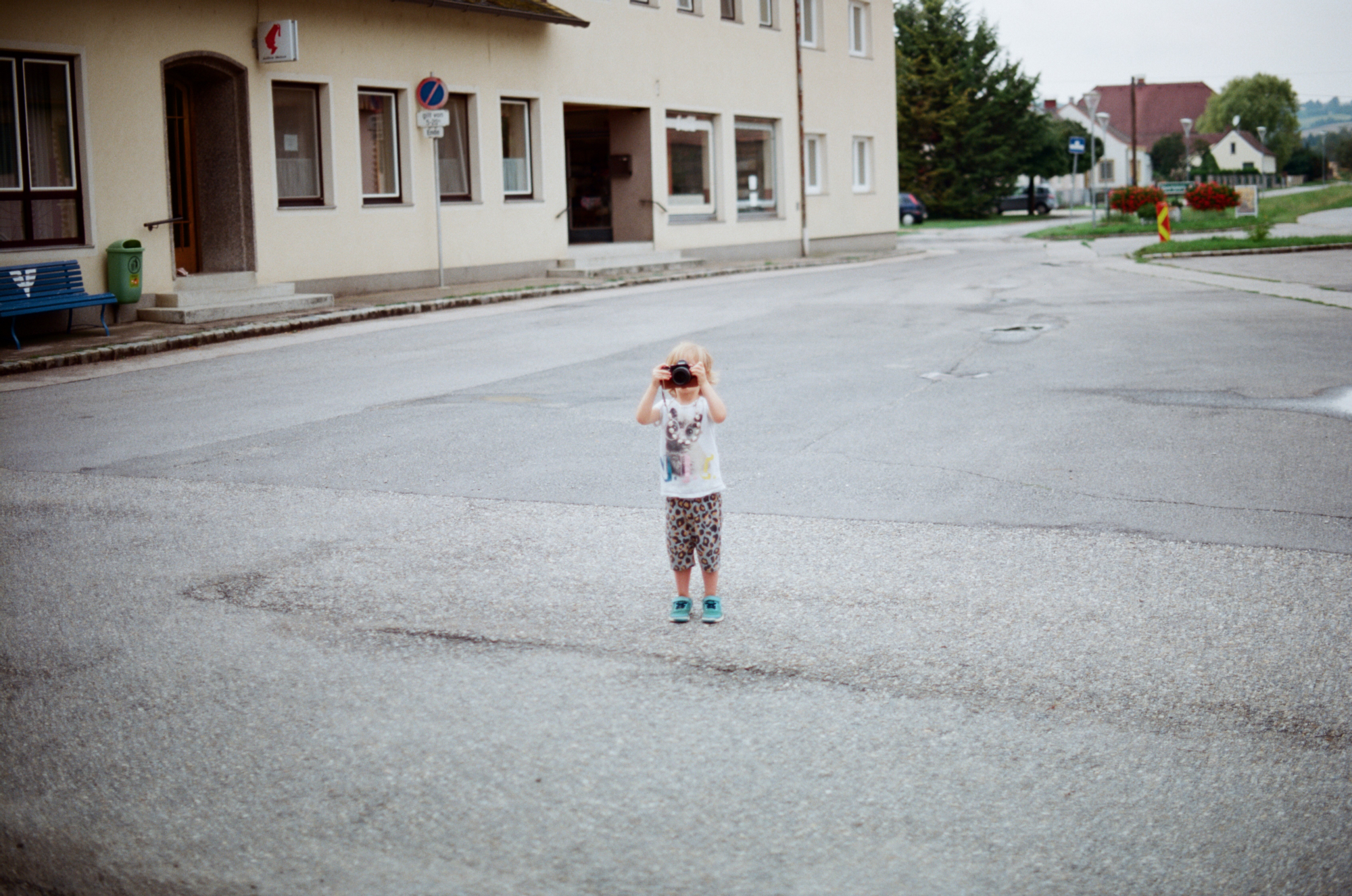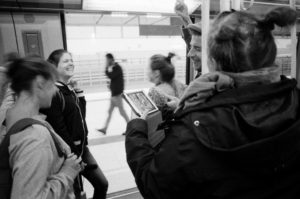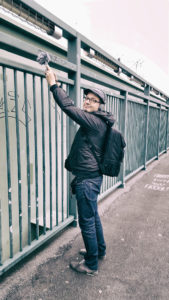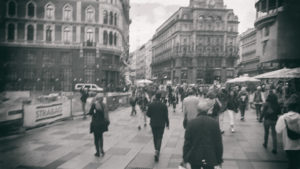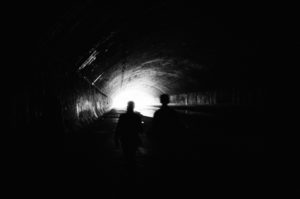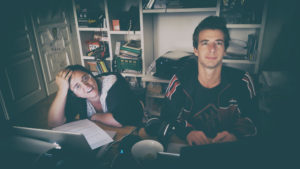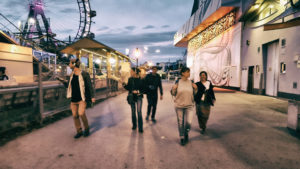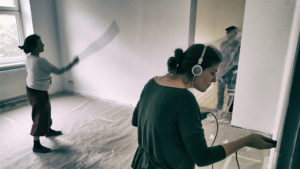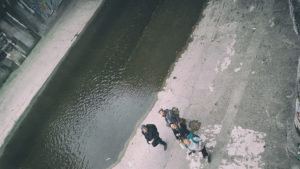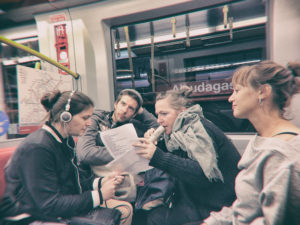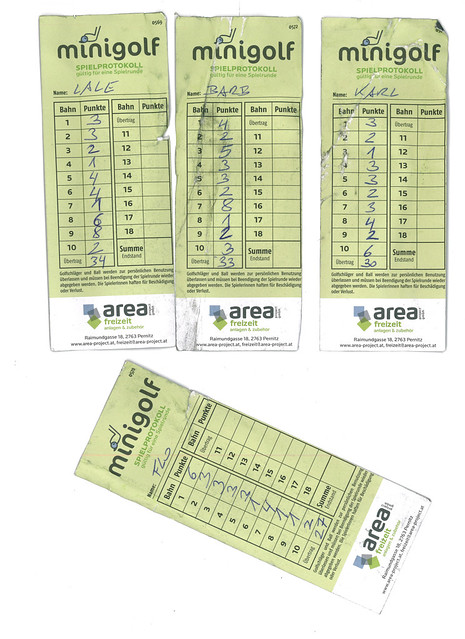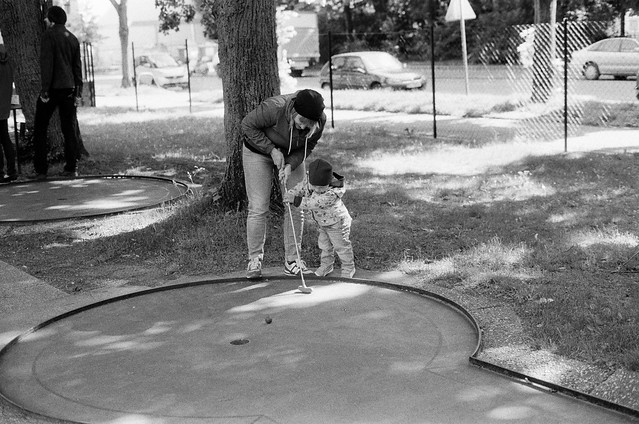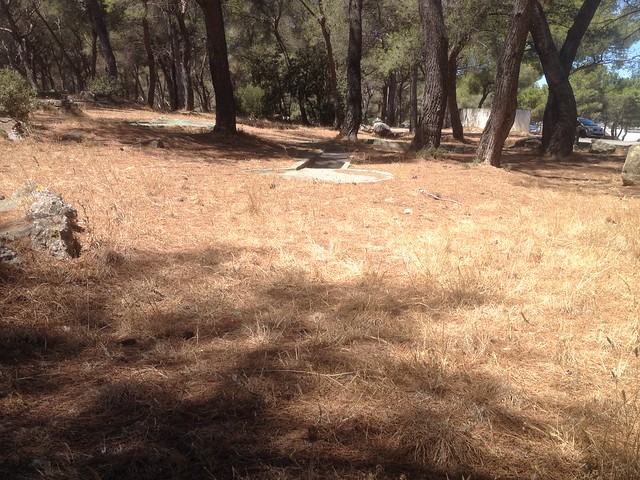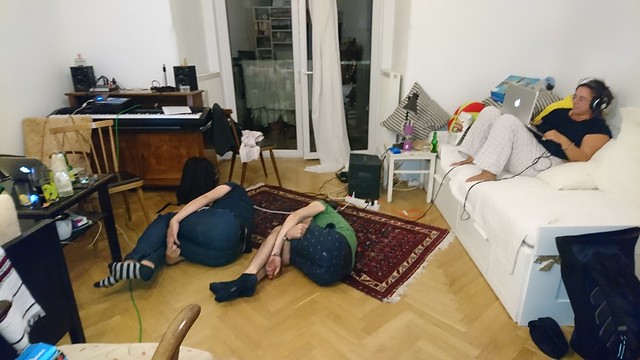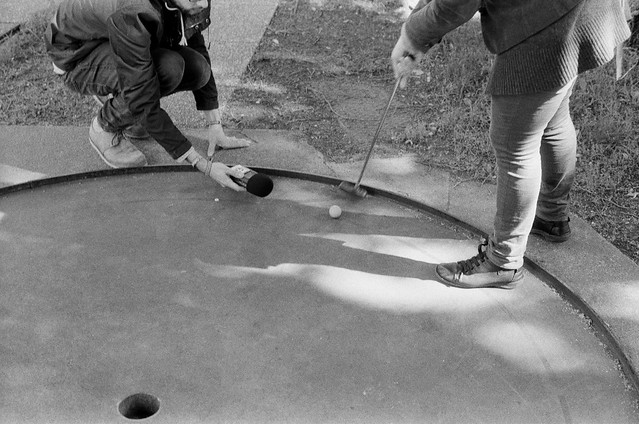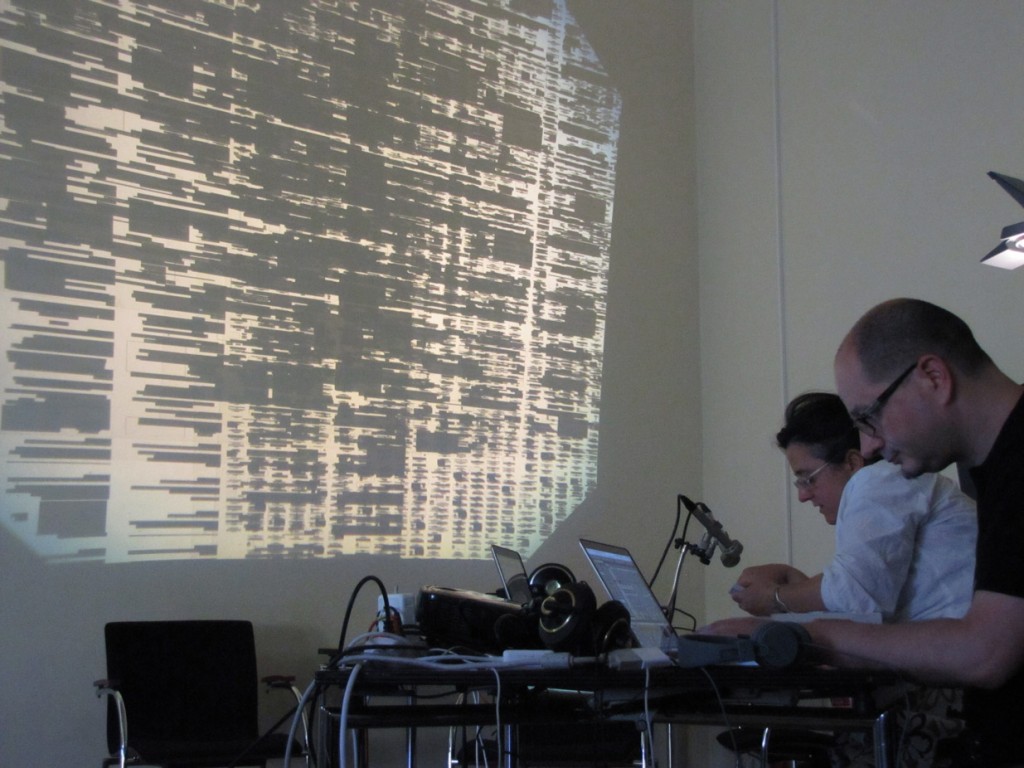A show by the wiener-radia-kollectiv presenting the project PERSONAL SPACE project by Hernán Kerlleñevich (ARG).
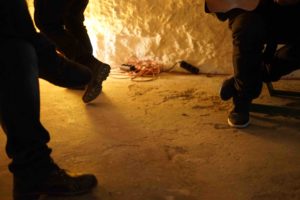
Beside other projects, Hernán started his project „Personal Space“ during the residency in Vienna from December 2016 until February 2017.
„Personal Space is presented as an interactive sound installation in which the sound sources are human musicians, who react subjectively with acoustic instruments to the locations of the public, based on proxemic relationships.
The term proxemics refers to the use and perception that humans have of their physical space, their personal intimacy. It describes the measurable distances between the individuals while they interact with each other, their postures and the existence or absence of physical contact.“
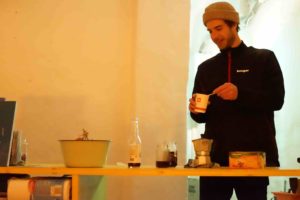
(Tobias arranging a comfortable personal space for the participants.)
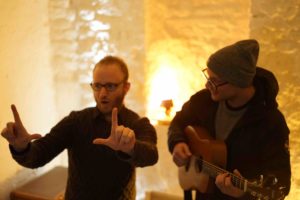
(Hernán physically explaining his idea of a personal space. Photo credit:speisekammertag)
The first steps for realizing the project took place in Vienna at the temporary space Feldversuch feldversuch.speis.net with following musicians:
Mona Matbou Riahi, Valentín Pelisch, Katrin Hauk, Peter Seher, Arnold Noid Haberl, Glo Noise, Diego Mune, Tanja Brueggemann, Susanna Gartmayer, Stojan Vavti,
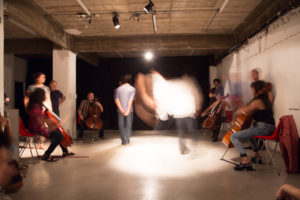
(Performance at Panal 361 Credit: Ignacio Silberfaden)
The final performance took place at Panal361 Art Gallery, Buenos Aires, Argentina, 21st of March 2017. Performer: Cecilia Quinteros, Eliana Rosales, Violeta García, Steve DiGregorio
This sound art experiment was created during the sonic art visiting artist residency program, which was organized by SPEISkammertag-Verein zur Förderung digitaler Kunst und Kultur in cooperation with Panal 361.
Lale Rodgarkia-Dara initiated the call for this residency in Vienna and was part of the jury together with the radia-collective-Vienna.
Radia-Kollektiv-Wien: Barbara Huber, Barbara Kaiser, Florian Bauer, Karl Schönswetter, Maria Herold.
Jury in Buenos Aires, Argentina was Helena Ferronato, Silvana Ovsejevich, Julieta Penedo.
The residency was part of an exchange programme. In 2016 an Argentinean artist was selected to take on a residency in Vienna with the focus on Sonic/Radio-Art.
The Exchange-Call was announced in August 2015 hostet by Speisekammertag.
About the artist:
Hernán Kerlleñevich’s artistic production includes interactive sound installations, audiovisual performances, site specific works, electronic and instrumental music compositions, interdisciplinary projects merging art and science. He is a founding member of the argentinian sound art collective Buenos Aires Sonora.
His work and collaborations have been exhibited and awarded at CCEBA (2009, Buenos Aires), EAC (2010, Montevideo), Espacio Fundación Telefónica (2013, Buenos Aires), Museo Castagnino (2013, Rosario) Ars Electronica (2013, Linz), Festival de Cannes (2015), Centro Cultural de la Ciencia (2016, Buenos Aires), Teatro Colón (2016, Buenos Aires), Biennale di Venezia (2013, 2016), and the Feldversuch (2017)
